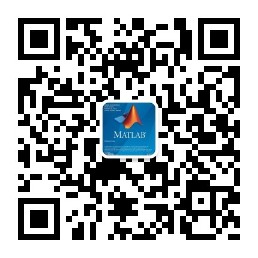博文
[转载]【信息技术】【2016.02】图像引导手术系统中的医学图像配准与软组织变形
||
本文为英国诺丁汉大学(作者:TAN CHYE CHEAH)的博士论文,共143页。
随着影像学技术的发展,图像引导手术(IGS)可以为外科医生提供高质量的三维人体解剖图像。虽然IGS目前在神经外科中得到了广泛的应用,但在将其应用于更一般的微创手术之前,仍然存在一些必须克服的局限性。在这篇论文中,我们在医学图像配准和脑组织形变建模领域做出了一些贡献。从方法论的角度来看,医学图像配准算法可以分为基于特征的配准算法和基于灰度的配准算法。基于特征的配准面临的挑战之一是确定给定任务和成像类型需要哪种特定类型的特征。为此,提出了一种基于点和曲线特征的点集配准方法,该方法具有基于点的配准精度和基于直线或曲线的配准鲁棒性。我们还利用基于强度的相似性度量来解决多模态图像的刚性配准问题。
互信息(mutual information,MI)是近年来出现的一种流行的相似度度量,在医学图像配准领域得到了广泛的认可。不幸的是,它忽略了图像中包含的空间信息,例如边缘和角点,这些信息在图像配准中可能有用。我们引入了一种新的相似度度量,称为自适应互信息度量(AMI),它结合了梯度空间信息。高梯度区域的显著像素对配准图像互信息的估计贡献较大。实验结果表明,该方法提高了配准精度,对与参考图像偏差较大的噪声图像具有较强的鲁棒性。
沿着这个方向,我们进一步改进了同时使用从多个特征中获得的所有信息的技术。该算法利用多个空间特征,对噪声和一些固有变化的影响不太敏感,配准精度更高。脑移位是一种复杂的现象,引起脑畸形的原因很多。我们研究了大脑形变的位置和大小模式,并考虑这种模式对纠正IGS系统中的大脑形变的影响。采用计算有限元方法分析了手术过程中脑组织的形变和应力张量。最后,我们开发了一个用于IGS解释的原型可视化显示和导航平台。该系统以Qt(cross-platform gui toolkit)为基础,以VTK(object-oriented visualization library)为渲染内核。在构建可视化软件平台的基础上,为今后脑组织形变的系统化研究奠定了基础。
In parallel with the developments in imaging modalities, image-guided surgery (IGS) can now provide the surgeon with high quality three-dimensional images depicting human anatomy. Although IGS is now in widely use in neurosurgery, there remain some limitations that must be overcome before it can be employed in more general minimally invasive procedures. In this thesis, we have developed several contributions to the field of medical image registration and brain tissue deformation modeling. From the methodology point of view, medical image registration algorithms can be classified into feature-based and intensity-based methods. One of the challenges faced by feature-based registration would be to determine which specific type of feature is desired for a given task and imaging type. For this reason, a point set registration using points and curves feature is proposed, which has the accuracy of registration based on points and the robustness of registration based on lines or curves. We have also tackled the problem on rigid registration of multimodal images using intensity-based similarity measures. Mutual information (MI) has emerged in recent years as a popular similarity metric and widely being recognized in the field of medical image registration. Unfortunately, it ignores the spatial information contained in the images such as edges and corners that might be useful in the image registration. We introduce a new similarity metric, called Adaptive Mutual Information (AMI) measure which incorporates the gradient spatial information. Salient pixels in the regions with high gradient value will contribute more in the estimation of mutual information of image pairs being registered. Experimental results showed that our proposed method improves registration accuracy and it is more robust to noise images which have large deviation from the reference image. Along with this direction, we further improve the technique to simultaneously use all information obtained from multiple features. Using multiple spatial features, the proposed algorithm is less sensitive to the effect of noise and some inherent variations, giving more accurate registration. Brain shift is a complex phenomenon and there are many different reasons causing brain deformation. We have investigated the pattern of brain deformation with respect to location and magnitude and to consider the implications of this pattern for correcting brain deformation in IGS systems. A computational finite element analysis was carried out to analyze the deformation and stress tensor experienced by the brain tissue during surgical operations. Finally, we have developed a prototype visualization display and navigation platform for interpretation of IGS. The system is based upon Qt (cross-platform GUI toolkit) and it integrates VTK (an object-oriented visualization library) as the rendering kernel. Based on the construction of a visualization software platform, we have laid a foundation on the future research to be extended to implement brain tissue deformation into the system.
1. 引言
2. 图像引导手术
3. 用均匀曲线特征细分技术改进非线性点集配准
4. 利用图像梯度信息的自适应互信息测度
5. 基于互信息的多特征医学图像配准
6. 图像引导手术系统:开发具有导航探头-组织交互的数据可视化接口
7. 结论与展望
更多精彩文章请关注公众号:
https://wap.sciencenet.cn/blog-69686-1281796.html
上一篇:[转载]【无人机】【2017.09】评估无人机系统(UAS)在新英格兰森林社区收集专题制图精度评估参考数据的使用
下一篇:[转载]【信息技术】【2006.09】一种抗加密后比特率转换的图像加密算法